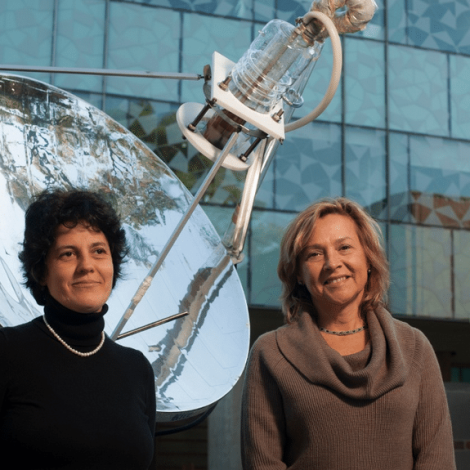Nanoscale heating has potential applications from burning up tumors to generating electricity. And now they have played a role in sterilizing medical instruments and treating human waste using little more than sunlight and water.
Naomi Halas, who directs of Rice’s Laboratory for Nanophotonics, and a research team designed two low-cost steam-generating devices that could solve infection and hygiene problems in developing countries.
[quote author=”Naomi Halas”]Solar steam’s efficiency at converting sunlight directly into steam opens up new possibilities for off-grid sterilization that simply aren’t available today.[/quote]
To pull off the trick, the researchers added light-absorbing nanoparticles to water. When sunlight strikes a particle, it converts the light to heat and transfers the heat quickly into the water. That heat creates a tiny bubble of steam around the particle. As more sunlight streams in, the bubble grows and eventually it rises to the surface of the water, taking the particle with it. At the surface, the steam escapes, leaving the particle behind.
The nanoparticle solution converts 80 percent of the solar energy into steam, leaving only 20 percent of the energy to heat up the liquid. In that way, Halas and her team have shown that they can vaporize water without heating it much. They can even vaporize ice water. The process works faster as the water heats up, however. With enough time in the sun, the solution begins to boil, converting water into steam through both actions, nanoparticle vaporization and boiling.
The researchers have used several kinds of nanoparticles, including metallic nanoshells and conductive carbon particles. They have also built at least two machines that put the particles to work. In a paper published July 16th in the journal PNAS, the team from Rice describe a solar autoclave and a solar human waste treatment system.
Solar autoclaves reflect sunlight onto a vessel filled with water, converting it into steam and channeling it into a pressure chamber that heat and pressurizes medical instruments to sterilize them.
A team of Rice undergraduates designed an autoclave that works in a similar way except that, presumably, it is much faster.
Similarly, the human waste treatment system blasts waste with steam to sterilize it. The disinfected waste is then safe for composting, burning as fuel, disposal or other uses.
The technology has the potential to treat waste for little cost in off-grid communities. As such, the Bill and Melinda Gates Foundation supports the work. Field tests of the waste sterilizer are planned at three sites in Kenya in cooperation with the waste-treatment organization Sanivation. http://sanivation.com/
“Sanitation technology isn’t glamorous, but it’s a matter of life and death for 2.5 billion people,” Halas says. “For this to really work, you need a technology that can be completely off-grid, that’s not that large, that functions relatively quickly, is easy to handle and doesn’t have dangerous components. Our Solar Steam system has all of that, and it’s the only technology we’ve seen that can completely sterilize waste. I can’t wait to see how it performs in the field.”
Research papers
Compact solar autoclave based on steam generation using broadband light-harvesting nanoparticles (PNAS July 16, 2013)
Solar Vapor Generation Enabled by Nanoparticles (ACS Nano November 19, 2012)

